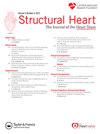Atrial Shunting for Heart Failure
IF 2.8
Q3 CARDIAC & CARDIOVASCULAR SYSTEMS
引用次数: 0
Abstract
Despite a plethora of pharmacological therapies for heart failure (HF), reducing the symptomatic burden in patients with advanced HF remains an unmet clinical need. Over the past decade, atrial shunting has emerged as a novel therapy for those with symptomatic HF despite optimal guideline-directed medical therapy. Initially thought of as a therapy reserved for those with diastolic HF, the field now spans the entire HF spectrum. In this review, we explore the physiology, devices, and trials that have shaped the field of atrial shunting. We detail how device-based interatrial shunts, no-implant interatrial shunts, and coronary sinus shunts aim to provide clinical benefit in specific patient populations and the limitations associated with their use.
心房分流治疗心力衰竭
尽管对心力衰竭(HF)有大量的药物治疗,但减轻晚期心力衰竭患者的症状负担仍然是一个未满足的临床需求。在过去的十年里,心房分流术已经成为一种治疗症状性心衰的新方法,尽管有最佳的指导药物治疗。最初被认为是为舒张性心衰患者保留的一种治疗方法,现在该领域涵盖了整个心衰频谱。在这篇综述中,我们探讨了形成心房分流领域的生理学、设备和试验。我们详细介绍了基于装置的房间分流、无植入物的房间分流和冠状动脉窦分流是如何在特定患者群体中提供临床益处的,以及它们使用的局限性。
本文章由计算机程序翻译,如有差异,请以英文原文为准。
求助全文
约1分钟内获得全文
求助全文
来源期刊

Structural Heart
Medicine-Cardiology and Cardiovascular Medicine
CiteScore
1.60
自引率
0.00%
发文量
81
 求助内容:
求助内容: 应助结果提醒方式:
应助结果提醒方式:


